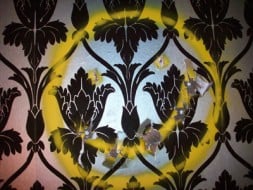Janissy wrote:
b9 wrote:
i am cascading through ever deepening levels of interest with respect to medieval cuisine.
i am trawling through the internet to find out all i can about the diets of people in medieval times.
That sounds interesting. My only knowledge of medieval cuisine comes from going to art museums and seeing what painters of the time painted people eating. The paintings showed lots of geese and ducks on the table. I don't know if this means people really ate that much geese and ducks in medieval times or if the painters just included them in many food paintings because they look interesting.
there is too much to say within the scope of a post what my response would be to that comment.
in short, only nobility and above nobility (clergy and royalty) were allowed to eat game animals.
even if a commoner could afford to lash out and buy a cut of fresh meat, it was illegal to do so according to sumptuary laws that decreed the appropriateness of consumption of various classes of foods pertaining to socioeconomic status.
i would imagine that paintings that you have seen that were painted in that era depicting food would portray the dinner tables of the rich, and as such, i would think they would adhere to authenticity in their content since artistic license was not necessary.
there is a lot to learn about medieval cuisine, and what i learn provides food for further thought.
take this dish for example
http://www.godecookery.com/mtrans/mtrans65.html
i do not know exactly what basil or thyme tastes like, but i think they are reasonably pungent, and i think they may be the herbs used in chicken stuffing, and if that is the case, i would not like their inclusion to the recipe above.
i would like to be able to taste what a dish will taste like before i go to the trouble of cooking it.
i then thought about how that could be achieved. unfortunately, in this era, it would be very difficult.
the tongue problem:
i first thought of the fact that the tongue can only sense 5 discrete tastes (sweet, bitter, umami, salty and acidic).
i then wondered how resolved were the taste buds to minute variations of intensity, and i could not guess, so i guessed 65536 grades of sensory amplitude (for argument's sake).
so a taste analogy may be possible by using 5 containers, each containing a substance that is purely representative of a single taste dimension, and then combining the correct proportions of these substances (that should be able to be uploaded from the recipe site with a "what does it taste like" tag) to produce a few drops of "what it will taste like".
but then, after i thought that , i realized that there were "texture" questions that could not begin to be charted in a virtual way.
and on top of it all, even if i was able to duplicate the combinations of pure taste dimensions from a scanned sample, there is the olfactory situation to consider, and it is far more sophisticated than the sense of taste, so it has many more dimensions of sensitivity.....i gave up the idea of "taste-file" a while ago, but i have no animosity toward that pursuit.
i just have to try the recipes for real and be brave, and not try to find a way to simulate what i should expect to taste using unattainable levels of technology.














